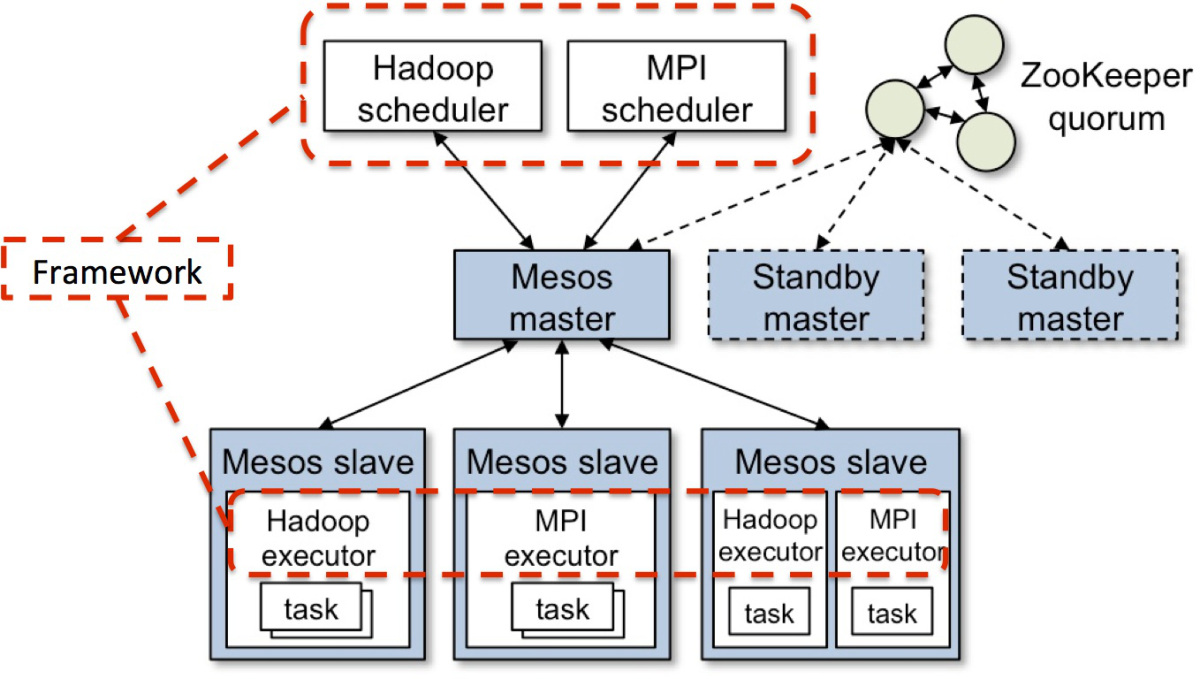Note:This is a beginning for testing Blog.
Mesos
Architecture

The above figure shows the main components of Mesos. Mesos consists of a master daemon that manages slave daemons running on each cluster node, and Master framework that run tasks on these slaves. The Mesos master works with its slaves to determine each node’s available resources, aggregates all reported available resources across all nodes, and offers them to frameworks that have registered with the master as a client. Frameworks can choose to accept or reject resources offers from the master based on the requirements of the application using that frameworks. Once offers are accepted, the master coordinates with the framworks and the slaves to schedule tasks on the participating nades and to execute them in containers so that multiple types of tasks, such a Hadoop and Cassandram, can run simultaneously on the same nodes.
Frameworks
Apache Mesos is offen explained as being a kernel for data-centre, meaning that cluster resources (CPU, GPU, RAM, Disk…) are tracked ad offered to “user space” programs(i.e Frameworks) to do computations on the cluster.
From the above figure
